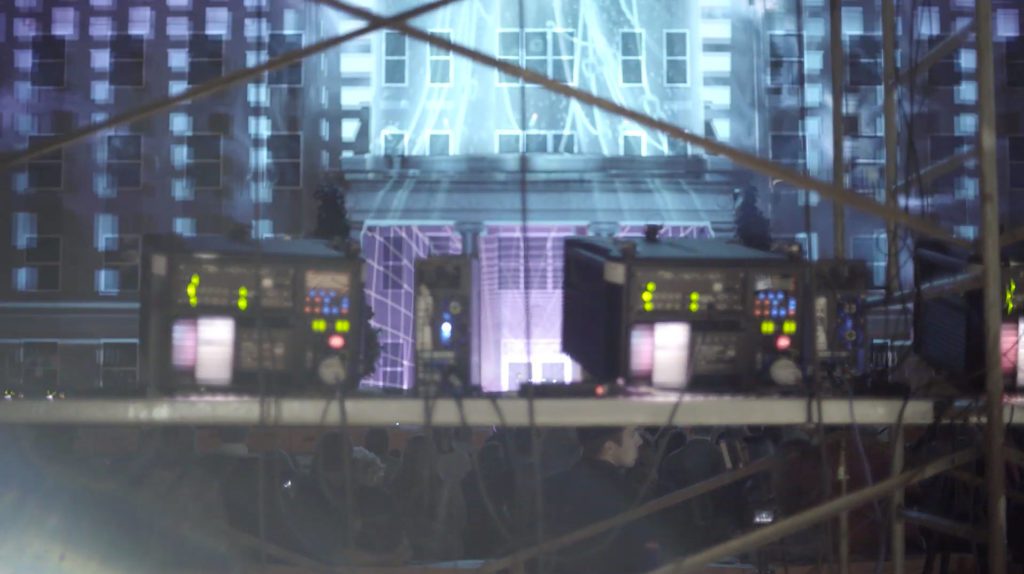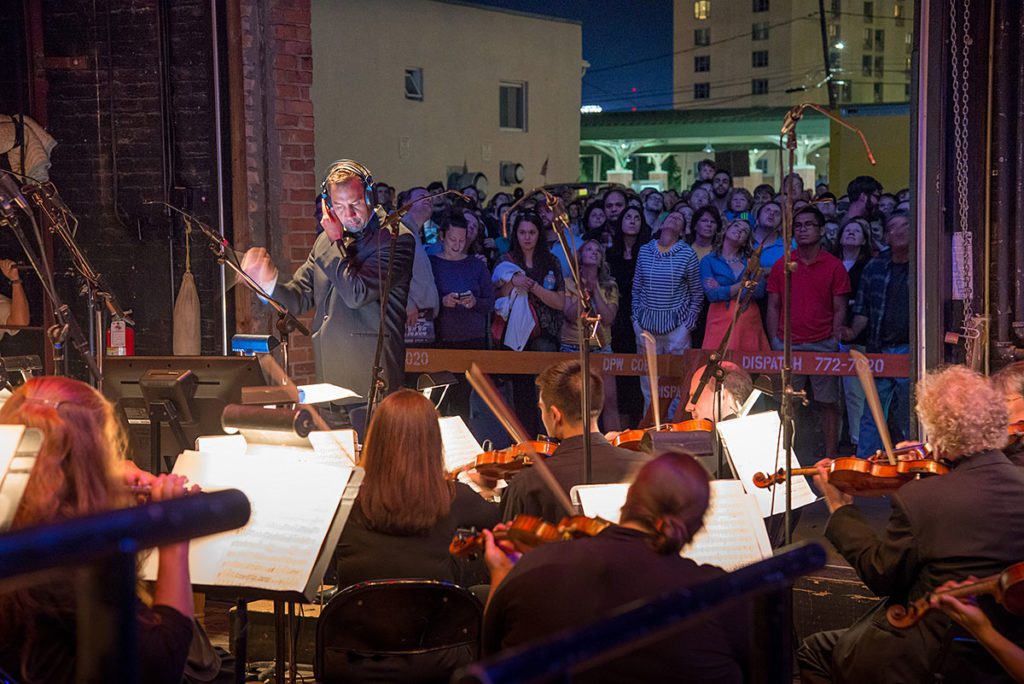Binghamton Buildings Tell the Story During One of the Nation’s Largest Projection Arts Fests
In a place so steeped in a history of ingenuity and so supportive of a thriving arts scene, it’s only natural that two of those artists would dream of – and execute – something this big. The LUMA projection arts festival is big. Both in the sense of the buildings that transform into canvasses and the tens of thousands who show up to witness the exciting sights each September.

“Projection mapping is using projectors and digital animation that’s made just for that architecture,” LUMA Co-Founder Tice Lerner says. “You can reinvent that surface. It becomes a malleable canvas that can be sculpted.”
“We can make them collapse, we can bring them back to life, we can turn them into monsters,” Co-Founder Joshua Bernard says. “It’s creating the illusion the building has come alive and transformed into something else.”
It’s fascinating stuff and something you basically have to see to believe. So, it’s a bit hard to believe the extremely humble beginnings in Bernard’s apartment. Lerner had introduced Bernard to the concept of projection mapping, which had picked up in artistic popularity overseas. They turned to the web, only to discover there weren’t many resources out there. Essentially no one was really doing it.
“So, what I ended up doing was bringing home some projectors from the office job I was working at the time and projecting on my kitchen cabinets. We started experimenting,” Bernard says. “It was a little bit of a puzzle to solve to figure out how to make it work.”

Those cabinets were an inspiration, though, as the two began to dream of what they could do with this new discovery. Bernard had become involved in downtown revitalization efforts and this was the ultimate opportunity to improve tourism.
“We needed to do something so different and so spectacular that they don’t have it in their home city. That people are going to come from miles and miles around to actually see this thing that we’re doing that is truly unique and different,” he says.
Binghamton had a lot going for it thanks to an active crop of entrepreneurs and artists.
“I think what was missing was something that inspired people, something that drove them, something that was bigger than they could imagine in Binghamton,” Bernard says. “When we created that, people showed up.”

Like so many artists helping turn around Rust Belt cities, Lerner and Bernard saw that kind of potential in Binghamton. In their mission to inspire the masses, the two self-described tech geeks were inspired by their surroundings.
“Binghamton’s a very historical area. You’ve got some beautiful buildings from all different time periods that are just asking to be projected on,” Lerner says. “You can’t do what we do here somewhere else. It’s not common to see an entire downtown area taken over and used in that way.”
Now, LUMA draws both budding and prominent projection artists from all over the world. They, too, have made Binghamton a destination for themselves.
“We give the artists an incredible amount of freedom and they love it,” Bernard says. “We hand them a stack of buildings and say, ‘What inspires you, what do you want to be your canvas, what do you want to create, what’s the story you want to tell?’”

That storytelling is another key to the differentiation and success of the festival.
“We ask them to tell a story. We try to elevate projection mapping beyond fireworks, beyond spectacle,” Bernard says. “We want them to make an emotional connection with their audience.’”
The stories are told again and again and again on buildings across the city each September. And you’re invited to be part of these stories.